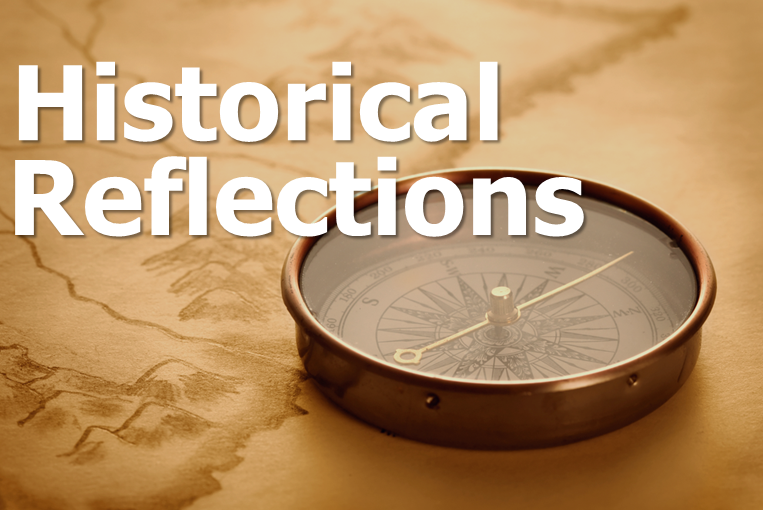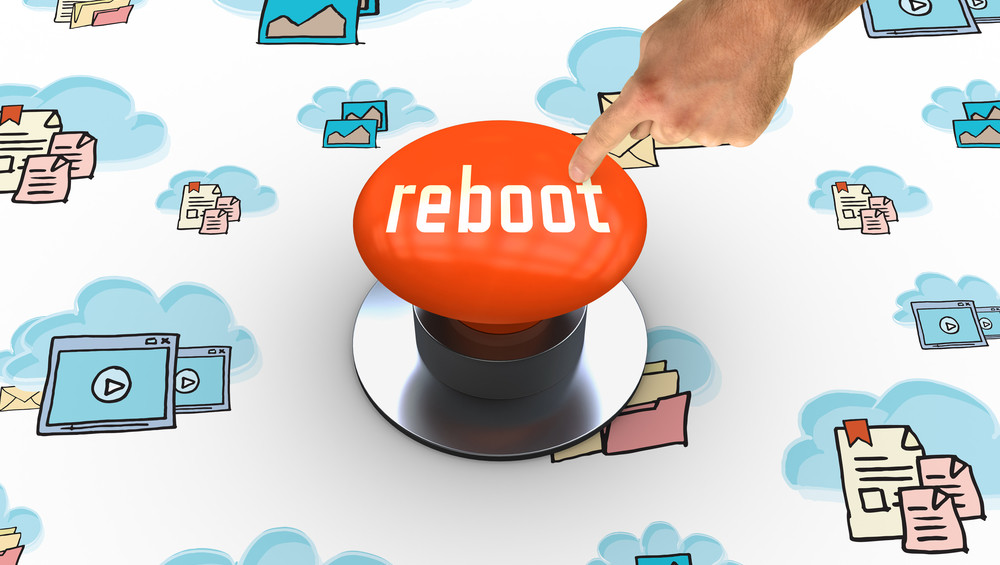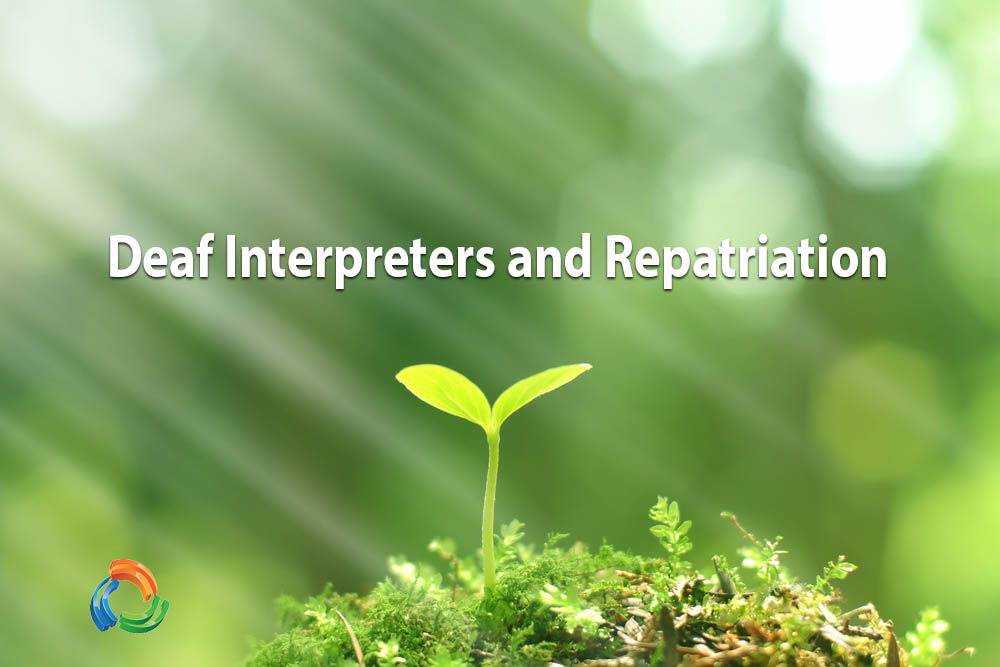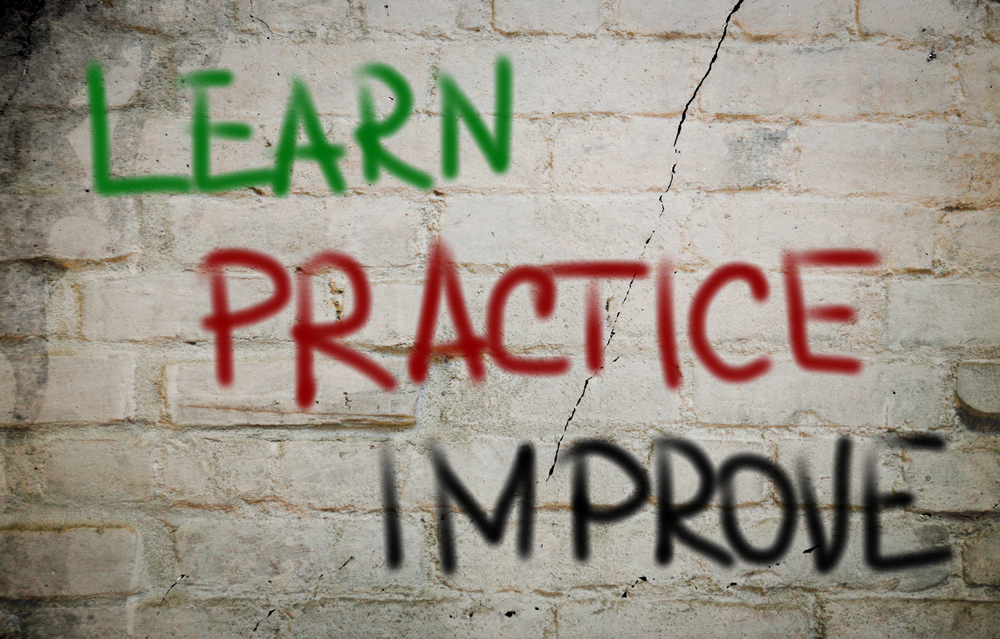
This presentation was originally shared as part of the 2014 Interpreter Education Month celebration. Special thanks to Dennis, Anna, and Wing for their work and to the National Interpreter Education Center (NIEC) for their support of the session.
Dennis Cokely and Anna Witter-Merithew presented, Interpreter Education: History is a Relentless Master as part of StreetLeverage’s Interpreter Education Month celebration. This presentation focused on the critical lessons that the field of interpreter education continues to grapple with, the contribution of federal funding to the growth and development of interpreter education, and the lingering questions that need to be answered.
You can find the PPT deck for their presentation here.
[Note from StreetLeverage: What follows is an English translation of Dennis and Anna’s presentation. We would encourage each of you to watch the video and access the presentation in ASL directly.]
[Click here to view presentation in ASL]
Interpreter Education: History is a Relentless Master
Wing Butler:
Hello to all of you joining us from your computers, laptops, mobile devices, etc. Welcome to this StreetLeverage webinar. We are thrilled that you are all able to join us! We truly have participants from around the globe today, which is amazing to see. We are delighted to have you all here. My name is Wing Butler and I’m a part of the StreetLeverage “Street Team” providing and supporting social media, advising and a variety of other endeavors. Brandon Arthur has tasked me today to facilitate today’s webinar. I’m thrilled and grateful to Brandon for his confidence in allowing me to facilitate today’s exciting event.
I want to give special thanks to the National Interpreter Education Center (NIEC) for hosting today’s webinar. They are providing technical and staff support, as well as coordination for this event. We are grateful for their participation and assistance in making today’s webinar possible.
I would also like to express our gratitude to our two speakers, Dennis Cokely and Anna Witter-Merithew, for joining us today. It’s an honor to have you both here. As an interpreter, I’ve had the opportunity to observe your work, read your writings, etc. Though you may not be fully aware, you have both educated me from my start as a new interpreter. As I was up and coming in the field, reading your books and articles, as well as seeing some of your presentations on video, influenced and formed me in my interpreter life. I’ve been interpreting for about 17 years and your work has had a profound impact on my career thus far. So today, I’m especially excited to have the opportunity to be here for your presentation, “Interpreter Education: History is a Relentless Master.” We’ve got quite an event ahead of us. In today’s webinar, you’ll be looking back on our history and the impacts that history has had on the present, in hopes that this reflection can empower us as we consider our path into the future. Thank you both so much for being here.
Obviously, I could provide an extensive description of each of your backgrounds, but I’ll suffice to say that you are both incredibly accomplished individuals and simply pass the presentation into your capable hands. Thank you for your time for today’s presentation. I’m eagerly anticipating this webinar. Thank you! On to you.
Anna and Dennis:
Thank you.
Anna:
Thank you, Wing, for your introduction. In preparation for today, Dennis and I have met several times to talk and reflect on this topic. I think the biggest takeaway for us after all of that is realizing the number of changes which have occurred, as well as realizing how many amazing people we’ve had the opportunity to meet in the course of our careers. Many of those wonderful individuals were Deaf people who taught us, led us, provided support and helped us to progress in our careers. It’s been a wonderful opportunity for us to reflect on the past, both professionally and personally – to remember parts of our own history and, at the same time, look at the broader history of interpreter education.
Both Dennis and I became involved in interpreting via invitations from the Deaf Community. Our lives have been rooted in the Deaf Community for many years. Dennis has been a teacher of Deaf children, a linguist, a sign language interpreter, a researcher, an interpreter educator, a program developer and has taken on so many other roles. As a leader, Dennis served two terms as the President of the Registry of Interpreters for the Deaf, Inc. (RID) as well as serving on the RID board prior to his service as President. There are many other roles he has taken on in the course of his career. As for the roles I have had in my career, I’ve been daughter, sign language interpreter, interpreter educator, program developer, and a leader, as well. I’ve been involved with the Conference of Interpreter Trainers (CIT) as well as serving on the RID board at various times.
We are thrilled to have this opportunity to discuss our view of interpreter education from a historical perspective. As our topic indicates, “Interpreter Education: History is a Relentless Master”, we’ve come to realize that history does repeat itself, relentlessly, to teach us important lessons. We both feel there are lessons we have not learned as a profession and we see the same recurring issues which means those issues require more study, consideration and analysis. We have to determine what, if we have identified these as recurring issues, we need to do to unpack the issues and give them a more thorough examination and more reflection. We also need to use the findings from these reflections to help determine our pathway into the future of interpreter education.
Next slide please.
Webinar Goal and Objectives
Anna:
I want to talk about the webinar goal and some of our objectives today.
First, when we look at interpreter education, we must look at the context in which interpreter education exists and has developed. We are going to discuss factors that impact the context of interpreter education. We will also discuss one of the biggest influences – the contribution of federal funding and how federal law has impacted the development of interpreter education. Finally, we will be identifying reoccurring issues and lingering questions impacting interpreter education. That’s our plan for today.
Next slide.
Socio-Political Context in Which Interpreter Education Exists
Anna:
The slide depicts a series of overlapping circles. There are many factors which influence interpreter education, but for the purposes of our discussion today, we’re going to focus on three of those factors. Education is often very insular. By the same token, interpreter education tends to be very insular, as well – isolated from other disciplines and influences and those who work in this arena often stay in that realm without venturing outside it on a regular basis.
Often, overworked teachers, program administrators, etc., do not have the bandwidth to network and get involved in other aspects of their field. They are often focused on their own program needs, keeping up with their own specialty, etc., rather than taking the opportunities to observe others and reflect on their own practice or how to apply what’s happening in the classroom to the outside world.
When we compare interpreter education at its inception to the state of interpreter education currently, we see that they are vastly different. In earlier times, Deaf people were very engaged in screening for and selecting future interpreters. That happened with both Dennis and me, Deaf Community members recognized, invited and encouraged us to get involved in interpreting, even providing guidance about the kinds of interpreting work we did in the early days. I remember feeling I was ready to take on a variety of interpreting jobs, but often, Deaf Community members would steer me in another direction, letting me know which jobs I was ready to take and which jobs I was still not qualified to do. That role in the process that existed in the early days no longer exists in the current state of interpreter education.
Dennis, did you want to say something?
Dennis:
You are right. I think Deaf people often had a mental roadmap for the progression of a sign language interpreter – which jobs were appropriate and when. This didn’t apply to only specific Deaf people – it was almost like this interpreter roadmap was part of a shared consciousness among Deaf people. In that way, Deaf people still had a modicum of control and could lead interpreters slowly through the progression from beginner to experienced interpreter. You are right about that.
Anna:
Yes. At that time, the Deaf Community had more authority to select interpreters, more involvement in the screening of interpreters. More of the decision-making power regarding interpreters fell to the Deaf community in those early days. Now, the roles have shifted dramatically. Sign language interpreting is more agency-based. Many of those agencies do not involve Deaf people and most are run by hearing people, some of whom do not even have a working knowledge of ASL. Still other agencies are foreign language agencies now tasked with hiring sign language interpreters. We’ve seen a huge shift. In the past, the Deaf Community was very involved with interpreters. For interpreters, there was involvement with and from the Deaf Community. At that time, it was one community working together. Now, it doesn’t feel like one single community. It feels as if there are two separate groups – the interpreters in their own community and the Deaf Community in theirs.
As more new interpreters gain entry into the field, there are no longer those deep bonds with the Deaf Community, with Deaf people. Some of these newer interpreters don’t have those ties, and don’t even know many Deaf people. They may have seen Deaf people on video for practice, but many have never socialized in the Deaf Community or developed deep relationships with the Deaf people in their community. We are realizing that this huge shift from one cohesive community into two separate communities has had a direct impact on interpreter education. Did you want to add something, Dennis?
Dennis:
Yes, I did. In addition to what you’ve described, we’ve seen even more detrimental results of this shift. There are interpreter education programs in the U.S. today which prohibit interpreting students from socializing or interacting in the Deaf Community. They prohibit it. One program requires the students to sign a contract indicating their agreement to avoid any social contact with the Deaf Community citing the small size of the community as their rationale. They believe that socializing in the community could create a conflict of interest if the student later had to interpret for someone they had met in the community. In my mind, that type of logic makes no sense. How can you learn the language of a group of people without interacting with them? And prohibiting that kind of interaction? It defies logic.
Anna:
Right. In addition, if I don’t interact with users of the language, how will I learn to make adaptations in my own language usage or how to set boundaries? How do I learn to negotiate in that language? Yes in this circumstance we are friendly and open, but in another role, another situation is may be different – how does one learn to navigate and put on the proper persona to represent various individuals while interpreting? If we prohibit social contact, we are limiting students’ ability to learn and develop coping skills which are a critical part of the interpreting world.
Dennis:
Right. Yes.
Anna:
So, that’s one layer of influence on interpreter education. In comparing our current situation with the early days in interpreter education, that’s a big change. Another huge shift also occurred. In earlier times, student interpreters had a much easier time finding and meeting Deaf people. They could go to the Deaf Club, attend Deaf events – there were often weekly or regular events where the community came together. The interactions between Deaf people and interpreters occurred regularly and easily. Now, Deaf people come together less regularly and rather than large-group events, gatherings tend to be in smaller groups defined by shared interests like sports, like ski clubs, or poker games, golf, etc. Many Deaf Clubs have closed which is another big change. Even if there are students who are highly motivated and want to go out into the community, where are they going to go? How will they find Deaf people now? In the past, it wasn’t as difficult. That’s another influence we have to consider as interpreter educators.
Another layer of influence is the general social attitude or social trends. When interpreter education programs were first being established, we didn’t have general societal support for ASL as a language, for the users of ASL to sign openly in public spaces, etc. When I was growing up, I remember when going out to do errands and things with my parents. They usually cautioned me not to sign openly in public. They were concerned that people wouldn’t like it, or may perceive it as being rude or that they would be dismissive. We’ve seen a big change in social attitudes and ASL is much more welcome and accepted by the general public. There are even opportunities for hearing people to learn ASL, but it is still rare to see ASL taught to Deaf people in any formal way. Colleges and universities, for the most part, don’t offer Deaf adults the opportunity to learn about their own language, its grammar and structure, etc. It remains a struggle for Deaf individuals to learn ASL as they are left to learn via social avenues only, from peers, etc., rather than in a formal classroom setting supplemented by social exposure.
Dennis:
And it is ironic because more and more hearing people are learning about ASL grammar and structure while many Deaf Community members don’t have access to that information. Hearing individuals often study linguistics and take formal ASL courses while Deaf people have not been afforded those opportunities. It creates an odd situation.
Anna:
There is a dichotomy there. These issues create a unique kind of tension. I see now…well, in the past, it seemed, because interpreters came from within the community, they already knew how to or had learned how to show respect, to know that it is inappropriate and impolite to criticize a Deaf person’s signing, even if they use a sign that is not the one you would have expected. It is respectful to accept the language as it is used, incorporate it in the interaction and move on. As we see more and more people taking linguistics classes, people assume they know more and often communicate that idea to the Deaf people through criticism and correcting a Deaf person’s signs. This is a serious faux pas. Again, this creates a difficult dynamic between the interpreting community and the Deaf Community. So, again, general society is more accustomed to seeing sign language interpreters, accustomed to encountering and interacting with them, used to seeing people use ASL in public places, even unexpected ones. In fact, sign language interpreters are becoming a more frequent topic of conversation. There was an emergency situation where a sign language interpreter was televised to provide access. Within a few days, there were a plethora of vlogs and articles from hearing people, with no knowledge about Deaf people, discussing what they saw, even to the extent that interpreters have become a part of late night comedy routines. This is a huge shift in attitude about interpreters, but at the same time, the same underlying attitudes of oppression persist. The oppression of Deaf people, their language, and their language rights continues, even in the face of these other shifts. There is still a lack of understanding of the Deaf perspective.
Another strong influence on interpreter education is legislative outcomes. In the early years of the interpreting profession, almost no one paid for interpreting services. The larger percent of interpreting, if not 100% of all our work as interpreters, was volunteered time. Most people who worked as interpreters in those early years also worked other jobs to support ourselves, but our passion, our heart was with interpreting and in supporting the Deaf Community and their right to participate fully in society.
Another factor was that American society was more attuned to human rights issues.
In the 1970s and 80s, Deaf people and people with disabilities were heavily involved in fighting for their human rights which created more legal cases and resulted in the passage of a variety of legislation. Today, we have the Americans with Disabilities Act (A.D.A.). This was one way to provide amazing levels of access and, at the same time, it has introduced new challenges, creating new issues which impact our work as interpreters, as well as the work of interpreter educators.
One example of these challenges is the creation of video relay services (VRS). What are the implications of the implementation of VRS? Providing interpreters without in-person contact? Meeting and conducting interpreted interactions through technology without traditional forms of interaction. How does that impact what our work looks like? How do Deaf people feel about it? This doesn’t only apply to VRS, but also to video remote interpreting (VRI), as well. The use of VRI services in hospitals, in courtrooms, etc. We are seeing VRI used in increasing numbers of settings and yet, it is still a new avenue. The technology itself has presented new challenges for the profession to address.
So, we’ve talked about the three largest factors which influence interpreter education. Dennis, you wanted to add some comments?
Dennis:
Yes, I did. It’s been interesting to watch the progression of VRS. Interpreters have become a part of the machine of VRS. The traditional warming up, “getting to know you” part of the interpreting interaction is gone from this form of interpreting. A call comes on screen and it’s, “Go!” That gives me pause. We spent so many years convincing people that we needed to have information about the players, the goals of the interaction, the context, in order to interpret effectively. Now, all of that is reversed in an instant. VRS interpreters take call after call without any of that information. It’s something to think about. VRS has had a major influence on both the work we do and on Deaf people’s view of interpreters as a group. Now, interpreters are seen as machines that can just roll through anything without pause. VRS has had been a major influence on the field.
Anna:
And at the same time, we haven’t seized some opportunities in this. The really experienced VRS interpreters have their own strategies for gathering and finding the pertinent information to create a fluid communication event. They’ve developed unique ways to find the goal of an interaction and ways to connect with the Deaf person in the moment. Some of those skills and abilities require a deep connection to Deaf people, to ASL and to Deaf culture. We haven’t discovered what all of that looks like yet, but we need to take the opportunity to document those skills and abilities and incorporate them into our educational strategies for future interpreters so that they can use them as they start to participate in video interpreting environments.
When VRS began, I saw many highly skilled interpreters, people who had many certifications and years of experience, go into VRS as a way to help balance the system. As time went by, those highly skilled people were pushed out in favor of hiring newer, less qualified, less experienced interpreters because the pay for those newer interpreters was significantly cheaper, making it easier to manage the costs of processing calls. That change alone has greatly impacted the quality of the experience for Deaf people using VRS. The level of job satisfaction for VRS interpreters has also been impacted. The level of connection and the feeling of accomplishment via video interaction just isn’t the same. It is also interesting to consider how VRS interpreters have impacted the hearing users of the service, as well. On occasion, I use VRS to conduct meetings or other business. When I’m acting as a hearing consumer of VRS services, I often find myself feeling frustrated. I can’t imagine how a hearing person with no knowledge about Deaf people must feel. How do they feel about the communication? About Deaf people? What assumptions do they make about Deaf people, their language, etc., based on these interactions? It’s a profound question. This is a huge challenge.
Next slide.
Interpreter Education: Early Mindset
Anna:
Lou Fant. I hope all of you watching today know about Lou Fant. Lou was a renowned writer, actor, interpreter and well-loved leader in our field. When RID celebrated their 25th anniversary, Lou wrote a book describing the history of interpreting and a history of RID. Lou incorporated some of his own personal experiences as one of our profession’s founding fathers and one of the founding members of RID. He had an incredible ability to reflect on the past and extract ideas that were relevant and applicable to the present day. The quote we’ve presented on the slide gives you some idea of the thinking of the time when RID was in its infancy. At the time, no one could predict what the interpreting world would eventually look like. No one could predict the future. When we look at it now, their vision for the future was a bit narrow in scope. Still, they expected to find people who had strong ties in the Deaf community, people who already knew how to sign, who only needed formal training to learn the process of interpreting, the cognitive processing required. They expected to continue to draw from that very specific pool of people. At the time, there was no expectation that they would eventually deal with people who had no prior experience in the community or with the language. They really had little insight into how much demand there would eventually be for sign language interpreters.
It really took us three or four generations of interpreters, as described in Lou’s quote, before we had a large enough pool of interpreters to start gathering data about what our work looked like, what a career in interpreting might look like. I consider myself third generation. Lou was a first generation interpreter, there was a generation between us, and then I’m third generation. I only worked full-time as an interpreter for a short period of time before I got involved in interpreter education. Back then, the demand for interpreters was so great – they needed people who could communicate their ideas and could show people how to develop interpreting skills. Many of us were plucked from the ranks of interpreters to become educators, even though we had little or no background or training as teachers. I was called to be an interpreter educator. It was a bumpy road for us, as educators, and, I believe, for the students, as well. At the same time, those of us who were teaching had a strong internal sense of what the work should look like, a sense that it was important to maintain a connection with Deaf people, etc. That fourth generation, they finally became the full-time interpreters and the pool of career interpreters started to expand. Even still, that group continues to grow. We need more time to really assess what this looks like in our every day lives as sign language interpreters. It’s important to continue to have theory, but it’s also important to compare the theoretical with what’s really happening in the daily lives of working interpreters who are on the job day in and day out.
Next slide.
Early Recruitment
Anna:
This slide is what I was just talking about. That’s what those who created RID expected. They recognized training was critical and envisioned drawing in people who already knew ASL. Presently, we are recruiting many individuals who know no ASL. They may have an interest in the language or want to get involved, but they basically have no prior experience, which is a big shift.
In the past, in terms of norms, interpreters usually possessed more native-like competence – either they were native and had grown up in a Deaf family or they were called…I never thought of myself as a “native” signer. I always saw myself as bilingual because I was raised with two languages simultaneously. I never used one language exclusively – both ASL and English influenced me and were a part of who I am. So, near-native competence in ASL as the norm for interpreters no longer exists. Today, there are possibly 15-20% of us who possess near-native competence in ASL. The rest of the interpreters are second language learners, most of whom have only a few ASL classes under their belt before they start learning to interpret. Even after certification, many of these interpreters still do not possess what we would label as native-like competence in ASL.
I’ll give you an example. I still have conversations with many interpreters regarding conferences such as the RID conference, etc. In these conversations, they object to the use of ASL because they don’t feel comfortable signing for themselves. It’s such an odd response. If I don’t feel comfortable expressing myself in ASL, how can I interpret other people’s language usage? The concept is foreign to me.
Next, we will be focusing more on legislative influences on interpreter education. I’m going to turn this portion of the presentation over to Dennis to talk about some of the critical outcomes. Dennis?
Next slide.
Program Expansion
Dennis:
As you can see on the slide, there are several boxes below which outline the rapid expansion of interpreter education programs. There was an explosion of programs, yes, but we weren’t ready for it. In the beginning, we knew very little about the cognitive processes involved in interpreting, still, programs proliferated. One of the reasons for that was legislation. Various laws mandated the provision of sign language interpreters. Another reason for this proliferation was the number of ASL students who took classes until they were maxed out and wondered what was next in the process. People in the field were equally perplexed but eventually decided that interpreting was the next logical step for those people. Thus, more and more interpreting courses were offered. Often, the provision of those courses was very spontaneous – very little planning and care was involved.
Currently, we have approximately 100 interpreter education programs which are based in community college settings. In the early days, we viewed interpreting in terms of vocational training. We hadn’t honed in on the cognitive processing involved in interpreting work at the time. It was considered an easy skill to pick up and, traditionally, vocational training is housed in our community colleges. So, program expansion was a critical issue.
It’s interesting to look at present day trends. We are seeing a decrease in community college programs – they are closing due to dwindling enrollment. The number of interpreting students is decreasing while the number of ASL classes is increasing. Enrollment numbers are critical for college and university programs. They aren’t able to afford a student teacher ratio of 5:1. We are seeing that struggle in more and more programs across the country.
Also interesting – we now have graduate programs in interpreting when, in the past, there were none. I should say that there was a graduate program at Western Maryland College – they housed two different tracks. One track was for teaching ASL and one was for teaching interpreting. That program opened around 1986 or so, but it was very short-lived and only lasted three to four years. In the present day, we see master’s and doctorate programs in interpreting. Hopefully, that trend will continue, but it remains to be seen.
Next slide.
Federal Funding for Interpreter Education
Dennis:
It’s important to recognize that the federal government has contributed more than thirty million dollars to interpreter education over the years.
Anna:
That’s amazing.
Dennis:
This started in 1965, when the federal government provided funding to the NAD. NAD then created and supported RID in its infancy. That same year, RID hired an executive director who was Deaf. At the time, RID was housed inside of NAD. The money they received in 1965 ended and at the time, they weren’t sure how to pay the rent they were paying to NAD. They weren’t able to afford the executive director any longer and had to lay them off. It was a struggle. RID didn’t have sufficient funds and ended up moving to Gallaudet in a tiny office space. Eventually, RID moved closer to NAD again until they purchased their own building but the first federal money was really given to NAD.
As you can see, in 1978, the federal government provided the first support for interpreter training. There were 10 regional centers established. The money was provided for shorter trainings – one to two day workshops. In 1979, there was a meeting in Atlanta. Interpreters came together to discuss the state of affairs in interpreting. That meeting ultimately resulted in a publication called, “Interpreter Training: The State of the Art”. That was published through Gallaudet.
The following year, 1980, there was meeting in Tucson, AZ. This particular meeting consisted of about 50 interpreters from around the United States who came together to discuss and document 100 critical questions that required answers. Once we had answered these questions, we believed we would be ready to create interpreter education programs and evaluate interpreters. We requested funding from the federal government – the 10 RSA regional centers requested specific funding for the creation of a center solely focused on research in the field. The request was denied. Out of the 100 questions we asked all those years ago, I believe we have successfully answered two. Ninety-eight of those original questions from 1980 remain unanswered.
Next slide.
Anna:
Dennis, I’m wondering…now we’ve jumped to the year 2000, but I’d like to go back to the 1980s. You were a part of a group known as “The Magnificent Seven” – seven interpreters who collaborated to analyze the cognitive aspects of the work. “The Magnificent Seven”, as they were called, were the first group to do a task analysis of interpreting. Was that work funded by the federal government? How was the group’s work funded – with federal money or was it funded in some other way?
Dennis:
That was in 1983. I guess you could say it was federally funded, but indirectly. At the time, Ken Rust, from Madonna College, and Jan Kanda, who was from Kansas at Johnson County Community College, agreed to fly me, Ken, Jan, Betty Colonomos, Theresa Smith, Don Renzulli and Sharon Neumann Solow to meet.
Anna:
Were there seven or eight of you?
Dennis:
Seven – there were seven of us.
Anna:
Right. Seven – I remember it so clearly- the seven of you. “The Magnificent Seven” – I remember that time.
Dennis:
Ken and Jan’s grants funded our travel to the two sessions we had. One was at Madonna – the first session. A few months later, we had the second session at the Johnson County Community College. Once those two sessions were over, we presented our findings at the 1985 CIT conference.
Anna:
Yes, I remember that. And you also published that work, as well as developing curriculum, etc.
Dennis:
Yes, right. That’s right.
So, you can see on the current slides – in 2000, there was a change. Originally, we had 10 regional centers and one national center. In 2000, the regional centers were reduced from ten to five. However, the five centers received an increase in funding. In essence, the funding for each of the five regions doubled. So, again, there were the five regional centers plus one national center. In 2005, the national center was tasked with the oversight of the regional centers’ grants. It had to take responsibility for coordinating and evaluating the effectiveness of each of the programs. Again, that started in 2005 and is still true today. The national center surveys of interpreters, Deaf community members, interpreter education programs, referral agencies, etc. to analyze the evolution of the field, projections for the future, to determine future needs and so on.
So, you can clearly see that federal funding has played a major role in interpreter education. There has been significant financial support for many years. This included the changes in RID certification tests – the first of which came about in 1988 or 1989…1988. The first change occurred in 1988-1989 and they did receive federal money to redesign the test at that time. Federal funds were also provided for the Conference of Interpreter Trainers (CIT) for their accreditation project. The federal government also provided money to establish master’s level programs at Western Maryland College in teaching ASL and teaching interpreting. That money was from the FIPSE program – the Fund for the Improvement of Postsecondary Education. So, over the years, interpreter education has received a vast amount of money from the federal government.
Anna:
But, Dennis, the federal government still doesn’t really support the idea of establishing a center that is devoted solely to research, right?
Dennis:
No, they don’t.
Anna:
How do we change that thinking? Is there anything that we can do to encourage a change in perspective?
Dennis:
Well, all of our funding and support has come from the Department of Education. We have to start looking at other agencies and other sources for funding. For example, the National Science Foundation (NSF) – is more supportive of research.
Anna:
Yes – NSF or maybe NIDRR.
Dennis:
Yes – it feels like there are some important agencies. The Department of Education just doesn’t seem to be supportive of research, so…it is what it is. And now, our current RSA five-year grant expires in September of 2015. We don’t know if the government will renew the grant, if the structure will change, etc. We just don’t have any idea. But in 2015, we hope the grant will be renewed for another 5 years, but there’s no way of knowing at this point.
New slide.
Federal Funding for Interpreter Education Cont.
Dennis:
This slide summarizes some of the points Anna and I have just described – some of the takeaway points regarding federal funding for interpreter education.
One of the issues is that, without governmental funding for research, we have pockets of isolated research but there’s no cohesive effort. Obviously, Anna and I can collaborate on a small scale, but if we were all able to come together on a national level, we could create a national agenda, a national curriculum for educating interpreters, and develop a national plan. We haven’t been able to do that.
Anna:
What are the implications of that? You’ve already talked about that a bit, but I’m wondering if you could expand on this a little more. It seems like, with all this federal funding, we’ve been able to develop some terrific products and projects – we could mention the Multi-cultural curriculum, the DeafBlind curriculum – there are a number of products we’ve developed, but there’s no systematic approach to meeting our needs. So, people develop products, but we don’t have information about which programs incorporate them, which don’t. We don’t have any information – it’s up to the individual program. There’s no systematic approach to creating the products and materials we need to educate interpreters.
Dennis:
That’s right. Many interpreter education programs have one full time instructor and maybe a part time person or two or adjunct faculty which means their time is at a premium. Things like curriculum development and candidate screening really take a back seat to satisfying immediate program needs.
Anna:
And a high percentage of interpreter educators are quickly approaching retirement. Many interpreter educators like me have been in education for 40 years and getting closer to our retirement. Luckily, for the next generation, we have a few graduate programs and a doctorate program for interpreter educators. I guess I’m curious to see if the next generation is really interested in pursuing interpreter education or if they are interested in other arenas. I wonder what will happen to many of the programs as this occurs.
Dennis:
Yes. That’s right. There was a recent survey that said that 26% of interpreter educators were slated to retire in the next 2-3 years.
Anna:
Wow. That’s amazing. I will be. Will you, Dennis? You’re pretty stubborn. I can see you staying for the long haul.
Dennis:
You are a third or fourth generation interpreter – I feel like I’m a sixth or seventh generation interpreter.
Next slide.
Market Disorder
Anna:
Now, Dennis was talking about some amazing things. Today we have 147 interpreter education programs. It’s pretty amazing.
We have a certification process. We have programs. We have CIT’s accreditation program, however, the larger percentage of interpreter education programs are not accredited. It’s really a small percentage even today. We have certification, but we still don’t really understand what it is supposed to look like. Most members of RID – and this is another big shift in the field – in the past, the RID membership was primarily certified interpreters. RID didn’t really start to grow the associate membership until the late 1980s, so there was a really small number of RID members who were not certified. That translated to conferences and other RID events focusing in on the needs of certified members to maintain and develop their skills. There has been a radical shift in the RID membership since that time. Currently, the largest number of RID members today are not certified. In many ways, it seems strange that the membership of our professional organization is mostly comprised of interpreters who are not certified.
So that has really had a large impact. It creates a lot of market disorder. There are very few standards. We don’t have certification standards or even agree on what a certified interpreter looks like or what it means to be certified. We see varying skill levels from certified interpreters and variation in what the work looks like. There are no standards for hiring interpreters, for interpreter wages. There is so much market disorder. We have a lot we can be proud of, but we are also impacted by many variables which impact the stability of the market.
We know how to create programs and projects and implement them. We know how to found an organization like CIT and work on projects like accreditation. That project required years of effort by numerous people – more than 20 years, in fact, to finally implement accreditation. After all the work and energy to create the accreditation program, for example, very few programs have taken advantage of it. These kinds of imbalances create a level of destabilization. We are so far behind. Our work is far from complete.
Dennis:
Still, 50 years later…RID has been around for 50 years. CIT has been around for a long time. But these two organizations are still volunteer-run organizations. Obviously, we have the national office for RID with paid staff and the executive director, but the leaders in our field, in these professional organizations, still volunteer their time. Our leaders are volunteering to serve as presidents and vice presidents of RID and CIT. I think it is something we need to think about. Can we successfully continue with this kind of model? Can we continue to progress when we are led by volunteer organizations? It’s something to consider.
Next slide.
Behind the Eight Ball
Anna:
One thing has always struck me – we are always playing catch up. We are never in a position to be proactive, rather, we are always reacting. We always seem to be behind the eight ball instead of getting ahead. One example of this happened in the late 1970s with the passage of PL 94-142, the mainstreaming legislation at that time. Deaf children were moved from the schools for the deaf and started attending schools in their local, home district. We certainly had concerns and opinions about the implementation of the law, but we discussed these issues within our own community rather than voicing our concerns to the powers that be. We weren’t successful in creating change or coming up with an approach that was successful. We haven’t caught up with that. This is really a critical issue. Our inability to be proactive has been detrimental. It feels like the Deaf community has suffered at our hands – that’s certainly not the only cause, but the Deaf community has been at our mercy, in large part, because we haven’t figured out how to come to the table and join the discussion outside of our own ranks. We haven’t been successful on a federal level, we haven’t been able to advocate, to participate in creating legislation. We haven’t done a great job of educating society about interpreting, what it looks like, why it is necessary. We just haven’t done a good job with that and we’re still behind the eight ball. We haven’t caught up and it feels like we sort of missed the boat in a lot of ways. There’s no way for us to really catch up. We’re certainly trying our best, but we’re sort of making progress on the fly. Ultimately, the results of this inability to be proactive are really devastating.
Dennis:
I think one of the things that has happened over the last 30 years or so is that the interpreters, as a profession, have lost control of the work. We’ve lost control of who defines our work. VRS defines our work, the FCC defines our work, hiring entities – people who hire K12 interpreters, all these external forces are controlling our work – spoken language referral agencies, etc. As sign language interpreters, we have to try to fight back to regain control of our work for ourselves and not allow external forces define the work that we do.
Anna:
Yes. That’s a really good example. We are so behind in that area. We have been so internally focused, so insulated that we haven’t really lifted our heads out of interpreter-world to use our efforts and energy in appropriate places. There are so many things we can’t agree on in our own community – we’ve been so consumed with the test, the certification test…we’ve lost sight of other critical areas that need our attention.
Next slide.
Deaf Community Involvement in Interpreter Education
Anna:
One huge impact is the decreased involvement of Deaf people’s involvement in interpreting. As Dennis mentioned earlier, in the beginning, RID and NAD worked together. NAD helped to found RID and maintained a level of involvement afterwards. Deaf people used to be involved in the screening and recruiting of interpreters, but now there is a completely different approach. It is extremely rare to have Deaf teachers involved in interpreter education. I still feel it is critical. I hope that if we grow the field of Deaf Interpreters, that’s one way to reintegrate Deaf people into the roles of gatekeeping. By having Deaf interpreters there, in the assignments, in the process, with other Deaf people, so that they can see what is required and what the process looks like, so they can feel empowered and have a better understanding of their roles. Hopefully, people can benefit from working with Deaf interpreters rather than just trying to get through an assignment.
Next slide.
Recurring Issues in Interpreter Education
Anna:
These are some of the recurring issues we see. If you read StreetLeverage posts, Cindy Volk posted an article, Sign Language Interpreter Education: Time for a National Call to Action, in October during Interpreter Education month. Her article addresses some of these recurring issues. These are issues that have not been resolved. They aren’t going away because we haven’t learned the lessons yet. We haven’t learned how to, as Dennis mentioned earlier, we haven’t learned how to be accountable and take control of what is happening within our field and in our work.
We have to be more creative and find ways to involve the Deaf community in our work and in the education of interpreters. We have to find ways to empower Deaf people to self-advocate, to fight for their language rights, to ask for qualified interpreters, to empower Deaf people so that they feel they can rejoin that gatekeeping process and join in the screening and selection of future interpreters.
We have to look at what we call “the gap”. We have to start using what we already know. We already know that graduating students isn’t enough. They don’t have sufficient skills when they graduate. The interpreter education programs say they can’t do outreach to students after they have graduated and have been in the field for three years. But the students aren’t ready. They need more time and more language exposure prior to interpreting. Perhaps that is the role of the community college, then. Perhaps they provide the language program that would feed into an interpreter education program on the college/university level. If students have two, three, perhaps even four years of completely focused language exposure – maybe you get a degree in ASL and then you do your graduate studies in interpreting. Who knows? But we have to figure out how to close that gap.
There have been a large number of lawsuits related to specific settings – courtrooms, etc., but they are really focused in the wrong direction. These places are stuck with the products we provide them. If we haven’t figured out how to consistently graduate competent interpreters, then we, and by “we” I mean the collective “we” – aren’t doing a good job. There are programs here and there which are doing a good job, but overall, there are so many graduates who enter the field who just aren’t prepared. So, they graduate, they have no supervision, no support. They are left alone to learn on the job and they aren’t prepared. They aren’t ready to work independently – they don’t have sufficient experience or knowledge. They don’t have the ability to manage what they are doing. They are still learning the language. The programs just aren’t sufficient. They don’t have the depth or breadth of skill development to prepare students for the work they are going to do on their own. I think those are some of the examples we’ve been talking about.
The next slide has a few of the many questions that need to be answered. Dennis, did you want to say something?
Dennis:
Yes. These are some of the questions related to the topic Anna was just discussing – what outcomes are necessary for graduates, etc. So, these are some of the lingering questions we have in the field. If we don’t look at these questions and we continue to move forward without answers, nothing will change in interpreter education or interpreting, in general. We have to confront some of these very difficult questions.
Anna:
Yes, Dennis. Do you have any idea where that discussion starts? Where do we begin? At what point?
Dennis:
I think some of the conversations have already started in places like StreetLeverage, both the posts online and at the StreetLeverage Live events. The conversation has started. We have to start talking about these things at RID, at CIT. We have to make a place, we have to create a space for these discussions. When you look at the RID conference schedule, we see the list of presenters, but where are the discussions? Where are we having this conversation? Where are we making the time to debate and discuss these issues? Certainly, RID has committees and there are people having these conversations on a smaller scale, but we need more people involved in it. I still think we need to include more voices – we need more people involved in the conversation.
Anna:
Yes. I’m thinking about that. RID – we’ve been involved there. I also think community forums are a great starting place, but once that happens, how do we continue to spread the word? There are multiple levels we need to be working on – state, local and national levels.
Laughter as the slide in the presentation returns to the beginning.
Dennis:
Well, I guess that’s it.
Anna:
Our last slide got skipped. The closing point…oh. Go back. Back up. One more…oh! No? Nevermind.
That’s fine. We’re good.
I just want to leave you with one final thought. We have to remember Deaf people in all of this. Deaf people depend on the decisions we make about interpreter education and what it will look like into the future, as well as future interpreters and how we move forward. Remember why you are here and who we serve. Think of these things with deep respect, reverence and humility.
Dennis:
Yes. Respect, reverence and humility. We have to remember to be humble. The decisions we make – we don’t make them alone. We make them in our partnership with Deaf people. We are all in this together.
Anna:
Agreed.
Wing:
As we are closing this webinar today, I’d like to share a piece of my own heart. As I watched you both tonight, there was so much of yourselves in your presentation. It was really amazing. The wealth of knowledge you shared tonight was so rich, I only hope that we all can take some of that wealth of knowledge to share with others. Your years of experience and your valued perspectives are something we can gather and store and grow over time. Honestly, I feel humbled by your willingness to take time out to share your knowledge, experience and perspectives with us today. We are very fortunate – interpreting as a profession is fortunate – to have benefitted from your service all of these years. Hopefully, we can all come together to work towards a shared vision of the future. Thank you both so much.
Anna:
As we said in our opening – we both feel indebted. We are indebted to the Deaf Community. They have given so much to us in our lives. We’ll never be able to repay it. This is how we repay that debt.
Dennis:
Absolutely. We are indebted.
Wing:
In some ways, my little crayon box had a few colors, but tonight added another color. Something I can take to use and write with on my own.
Anna:
What color is it? What color did we add?
Wing:
I don’t know – something new and different.
Anna:
Something old? The color of old?
Wing:
No, no. Just something different and inspiring.
Dennis:
No, no, no.
Anna:
I know what your are thinking – I’m the old one.
Laughter all around.
Dennis:
Old and feeling old are two different things.
Wing:
Many of the participants, as they were joining, expressed their thanks via AIM, email, etc. They are grateful for your work. They all say that this presentation is so relevant. So now, for all the participants tonight – your job is to share this information. Go to www.streetleverage.com. This presentation will be posted on the blog and you can share the link with your interpreter friends. Share it with Deaf people and the Deaf Community. Hopefully, people will be moved by this conversation and be able to contribute and help us support the Deaf Community in whatever ways that we can.
Anna:
Thank you for allowing Dennis and I to take a look back on our history. It’s been a wonderful experience.
Dennis:
Thank you so much. I’ve really enjoyed this opportunity. I agree with Anna.
Anna:
Thank you so much. I’ve really enjoyed this opportunity.
Wing:
Thanks everyone! Take care! Bye now!












